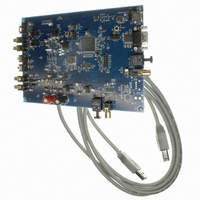CDB4265 Cirrus Logic Inc, CDB4265 Datasheet - Page 54

CDB4265
Manufacturer Part Number
CDB4265
Description
BOARD EVAL FOR CS4265 CODEC
Manufacturer
Cirrus Logic Inc
Specifications of CDB4265
Main Purpose
Audio, CODEC
Embedded
No
Utilized Ic / Part
CS4265
Primary Attributes
Stereo, 24-Bit, 192 kHz Sample Rate
Secondary Attributes
Graphic User Interface, S/PDIF/ I2S / I2C / SPI Interface
Description/function
Audio CODECs
Operating Supply Voltage
5 V
Product
Audio Modules
For Use With/related Products
CS4265
Lead Free Status / RoHS Status
Contains lead / RoHS non-compliant
Lead Free Status / RoHS Status
Lead free / RoHS Compliant, Contains lead / RoHS non-compliant
Other names
598-1001
54
11.3.1 One-Byte Mode
11.3.2 Two-Byte Mode
In many applications, the channel status blocks for the A and B channels will be identical. In this situation,
if the user reads a byte from one of the channel's blocks, the corresponding byte for the other channel will
be the same. Similarly, if the user wrote a byte to one channel's block, it would be necessary to write the
same byte to the other block. One-Byte Mode takes advantage of the often identical nature of A and B
channel status data.
When reading data in One-Byte Mode, a single byte is returned, which can be from channel A or B data,
depending on a register control bit. If a write is being done, the CS4265 expects a single byte to be input
to its control port. This byte will be written to both the A and B locations in the addressed word.
One-Byte Mode saves the user substantial control port access time, as it effectively accesses two byte’s
worth of information in 1 byte's worth of access time. If the control port's auto increment addressing is used
in combination with this mode, multi-byte accesses such as full-block reads or writes can be done espe-
cially efficiently.
There are those applications in which the A and B channel status blocks will not be the same, and the
user is interested in accessing both blocks. In these situations, Two-Byte Mode should be used to access
the E buffer.
In this mode, a read will cause the CS4265 to output two bytes from its control port. The first byte out rep-
resents the A channel status data, and the second byte represents the B channel status data. Writing is
similar, in that two bytes must now be input to the CS4265's control port. The A channel status data is
first; B channel status data is second.
CS4265
DS657F2















